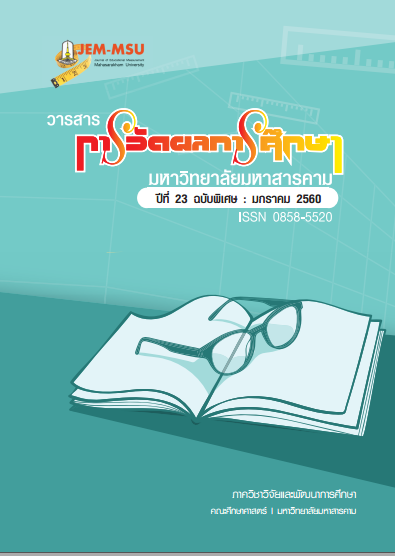The Science Instructional Model by Using Brain-based Learning Development of Prathomsuksa 3 Students on Leaning Achievement, Creative Thinking and Emotional Quotients
Main Article Content
Abstract
The purposes of this study were to: 1) to develop Science instructional model
by using brain-based learning, and 2) to compare leaning achievement, creative thinking and
emotional quotients between before and after by using the brain-based learning (BBL). The
samples consisted of 12 Prathomsuksa 3 students by purposive sampling technique.
Research instruments were: 1) Brain-based learning lesson plan, 2) Learning achievement
test, 3) Creative thinking test, and 4) Emotional quotient test. The statistics used for
analyzing the collected data were mean and standard deviation and the Wilcoxon signed
ranks test.
The results of this research were as follows:
1. The science learning achievement of students who learned using the brainbased learning were the last study higher than the first at the .01 level of significance.
2. The creative thinking of students who learned using the brain-based learning
were the last study higher than the first at the .01 level of significance.
3. The emotional quotients of students who learned using the brain brain-based
learning were the last study higher than the first at the .01 level of significance.
In conclusion, The science instructional model by using brain-based learning can
improve science learning achievement to be higher. In addition, creative thinking and
emotional quotients were increase. The teachers should be supported and promoted to
implement the science instructional model by using brain-based learning in teaching for
developing student’s developments.
Article Details
The content and information contained in the published article in the Journal of Educational Measurement Mahasarakham University represent the opinions and responsibilities of the authors directly. The editorial board of the journal is not necessarily in agreement with or responsible for any of the content.
The articles, data, content, images, etc. that have been published in the Journal of Educational Measurement Mahasarakham University are copyrighted by the journal. If any individual or organization wishes to reproduce or perform any actions involving the entirety or any part of the content, they must obtain written permission from the Journal of Educational Measurement Mahasarakham University.


